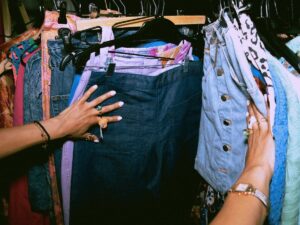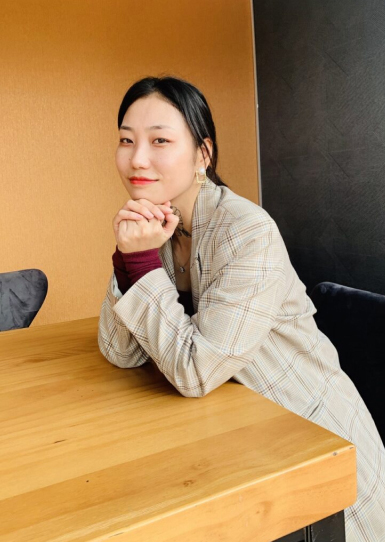Ever thought about diving into the world of fashion with a twist? Starting a vintage clothing business could be your golden ticket.
With years of industry experience and a deep passion for vintage fashion, our insights can help guide you through the process of establishing a successful vintage clothing business.
A vintage clothing business stands out for its ability to connect the past with the present, offering timeless pieces that tell a story. Such businesses not only cater to fashion enthusiasts but also promote sustainable consumer habits.
In this guide, you will learn the key steps to launching and growing your venture in the vintage clothing sector, covering everything from market research to branding.
Step#1 Understanding the Vintage Clothing Market
Diving into the vintage clothing market requires a solid grasp of its landscape to strategically position the business for success. Here are key areas to focus on:
- Market Trends: To stay ahead in the vintage clothing market, keep an eye on fashion trends that influence vintage preferences. Regularly visit fashion blogs, attend vintage fairs, and monitor social media to understand what styles are in demand.

- Customer Demographics: Identifying your target audience is essential. Research the age, interests, and spending habits of potential customers by conducting surveys or using social media analytics. This information will help tailor your inventory to meet their preferences.
- Market Analysis: Conduct a thorough analysis of your competitors and the broader vintage clothing market. Identify gaps in the market that your business can fill, and use this information to carve out a unique niche for the brand.

- Niche Selection: Choosing a specific niche within the vintage market can set your business apart. Decide whether you want to specialize in a particular era, type of clothing, or designer brand, and then select your collection accordingly. Let’s make your vintage vision a standout reality.

Step#2 Crafting a Business Plan
Transitioning from understanding the market, crafting a business plan serves as blueprint for success, outlining the business’ framework. Here are the essential components you need to focus on:
- Vision and Goals: Start by defining your business vision; what do you hope to achieve with your vintage clothing store? This vision should then be broken down into achievable goals, such as reaching a certain number of sales or opening a physical store within a year.
- Financial Plan: Your financial plan should detail your startup costs, including inventory acquisition and marketing expenses. It should also project your revenue, factoring in the pricing of your vintage pieces and anticipated sales volumes.
- Operations Plan: Outline the daily operations of the business, including how to source and store inventory. This should also cover the sales channels, whether online, in-person, or both, and how these will be managed. Remember, a well-organized plan is your roadmap to success in vintage fashion.
- Milestones: Set clear milestones for your business. For example, launching a website or achieving the first 100 sales within 1 month. These milestones will help you track your progress and keep your business objectives in focus.
Step#3 Sourcing Vintage Clothing
After meticulously crafting a business plan, the next vital step is sourcing the unique pieces that will set your collection apart. Here are strategies to properly source clothes that will appeal to customers:
- Thrifting: Visit local thrift shops, garage sales, and estate sales to uncover hidden gems. Take note, every piece has a history ready to enhance your collection. Regularly explore these venues, keep an eye out for items that match current trends and your niche, to find high-quality pieces at low prices.

- Wholesale Suppliers: Partner with vintage clothing wholesalers to secure a steady inventory. Identify reputable suppliers, negotiate terms, and acquire diverse, high-quality stock to meet customer demand. Integrating Hongyu Apparel’s vintage-inspired pieces can elevate your offerings.
- Online Marketplaces: Utilize online marketplaces such as eBay and Etsy to source vintage clothing from various locations. Set up alerts for specific items and regularly browse listings to quickly grab rare finds and broaden inventory’s uniqueness.
- Networking: Build a network within the vintage clothing community for opportunities for exclusive pieces. Attend vintage fairs, join online forums, and connect with other vintage enthusiasts to share insights and get access to unique items before they hit the open market.
Step#4 Establishing Your Business Legally and Financially
With unique collection now secured, next is to establish the business legally and financially to ensure smooth operation and remain compliant with laws and regulations. Here are key factors to consider:
- Business Registration: Before launching, register the business according to local laws. Choose a business structure, like sole proprietorship or limited liability company (LLC), and register the business name. Registering the business legitimizes your operation and is necessary for tax purposes.
- Taxation: Understand and set up the business’s tax requirements. Apply for any necessary tax IDs, like an EIN (Employer Identification Number) if in the U.S., and understand how to handle sales tax on goods sold. Proper tax setup ensures compliance and smooth financial operations.
- Insurance: Look into different types of insurance, such as property insurance for inventory and liability insurance for customer interactions. Having the right insurance coverage safeguards the business assets and provides peace of mind.
- Banking: Open a business bank account to keep personal and business finances separate. This simplifies accounting and tax preparation, and presents the business more professionally. Consider also exploring financing options for funding inventory purchases or expansion efforts.
Step#5 Building a Strong Brand Identity and Online Presence
Once the business is established legally and financially, building a strong brand identity and online presence is vital for differentiation and effective audience engagement. Here are key actions to take:
- Logo and Branding: Create a distinct logo and branding elements that match the retro style of the business. This visual identity should be consistently applied across all the marketing materials and platforms to create a memorable brand image. Let’s make your brand unforgettable together.

- Website Development: Create a user-friendly website that showcases the collections. It should include an e-commerce platform, making it easy for customers to browse and purchase items online. Hongyu Apparel’s website boosts sales with its diverse collections and user-friendly design.
- Social Media: Utilize social media platforms like Instagram, Facebook, and Pinterest to showcase the inventory and engage with audience. Regularly post high-quality images, stories, and interactive content to build a community of vintage lovers.

- Email Marketing: Build an email marketing list from the website and social media followers. Send regular newsletters with updates about new stock, exclusive offers, and fashion tips to keep the audience engaged and encourage repeat visits to the website.
Step#6 Choosing Between an Online Store and a Brick-and-Mortar Shop
With brand identity already set, deciding between an online store or brick-and-mortar shop is vital, depending on operational needs and desired customer interaction. Here are the aspects to consider:
- Market Research and Consumer Behavior: Conduct thorough market research to understand where the target customers prefer to shop. Analyze consumer behavior trends to determine if audience is more inclined to shop online for convenience or appreciates the tactile experience of a physical store.
- Cost Analysis and Budget Planning: Evaluate the initial and ongoing costs associated with setting up and maintaining an online store versus a brick-and-mortar shop. Include website development and hosting fees for an online store or leasing and utility expenses for a physical location in the budget plan.
- Digital vs. Physical Customer Engagement: Consider how you will engage with customers. Online stores use social media for wide reach and engagement. We value connections, whether digital or in person. While, physical stores provide direct brand experiences and personalized service.
- Logistics and Fulfillment: Assess the logistics involved in each model, including inventory storage, shipping for an online store, or display and in-person sales for a brick-and-mortar shop. Determine which logistics model aligns best with the operational capabilities and customer service goals.
- Scalability and Expansion Opportunities: Think about the future growth of your business. An online store offers easier scalability without the need for physical expansion, while a brick-and-mortar shop can enhance local brand presence and offer physical expansion opportunities as the business grows.
Step#7 Marketing and Social Media Strategy
After deciding on an online or physical store, effective marketing and savvy social media are crucial for reaching the target audience. Here are the vital components to make your vintage brand stand out more:
- Brand Storytelling: Create a captivating story about your vintage brand, emphasizing what sets you apart and the deep passion driving the business forward. Use this story across all platforms to create a consistent and engaging brand image that customers can connect with on a personal level.
- Content Marketing: Generate informative and engaging content that showcases the vintage collection’s beauty and uniqueness. For example, create blog posts about the history of specific pieces, care tips, or styling advice. This will drive traffic to the website and social media profiles.
- Influencer Collaborations: Identify and partner with influencers who align with the brand’s aesthetic and values. Supply them with pieces from your collection to wear and share with their followers, extending your reach to potential customers who trust the influencer’s opinions and style choices.
- Search Engine Optimization (SEO) Strategies: Conduct keyword research to discover terms customers use to find vintage clothing online. Use these keywords in website content, like product titles, descriptions, and blog articles, to enhance search engine rankings and attract targeted traffic.
- Customer Engagement: Actively engage with followers on social media by responding to comments, sharing content created by users, and hosting interactive events such as live Q&A sessions or virtual try-ons. This builds a loyal customer community and strengthens brand connections.
Step#8 Inventory Management and Pricing Strategies
Following the marketing strategy, mastering inventory management and pricing is crucial to maintaining a fresh and appealing collection while optimizing financial health. Here are the vital actions to take:
- Stock Rotation: Regularly refresh the stock to keep collection appealing and relevant. Introduce new pieces periodically, ensuring your brand always has something fresh and exciting to offer. This maintains customer interest and a vibrant store atmosphere while phasing out slower-selling items.
- Pricing Model: Evaluate the unique characteristics of each vintage item, such as its era, design rarity, and condition. Set the prices by comparing these factors against current market demand and similar items’ prices, ensuring a balance between attractiveness to customers and profitability.
- Inventory Management System: Implement an effective system to monitor stock levels, sales trends, and item locations. Balanced inventory is crucial to meet demand and prevent stock issues, especially with a projected 9.94% CAGR growth in inventory software market, as per LinkedIn.

- Discounting: Strategically plan discounts and sales to move older inventory while maintaining the perceived value of your collection. Timing sales around seasonal trends or fashion cycles can help clear out previous seasons’ stock while captivating customers with attractive deals.
- Quality Control: Maintain strict inventory control for all incoming and outgoing stock to uphold the brand’s reputation for excellence. Regularly inspect items for any damage or wear and ensure they meet the established quality criteria before being listed for sale.
Here’s a concise overview of its key benefits:
| Aspect | Description |
| Reputation Management | Strict inventory control helps maintain the brand’s reputation by ensuring customers receive high-quality products consistently. |
| Damage Prevention | Regular inspection of items prevents the sale of damaged goods, reducing customer complaints and returns. |
| Quality Assurance | Upholding established quality criteria ensures that only products meeting standards are listed for sale, enhancing customer satisfaction. |
| Efficient Stock Management | Effective inventory control streamlines stock management processes, reducing the risk of stockouts or overstock situations. |
| Cost Savings | By minimizing losses due to damaged items and optimizing stock levels, strict inventory control contributes to cost savings for the business. |
Step#9 Launching Your Vintage Clothing Business
Building upon inventory management and pricing strategies, it’s time to launch the business into the competitive vintage clothing market. Here are the essential actions to undertake for a successful launch:
- Soft Launch: Initiate your venture with a soft launch, inviting a select group of potential customers to preview your collection. This approach allows you to gather valuable feedback and make necessary adjustments before the broader market introduction.
- Grand Opening: Organize an opening event that creates excitement and draws attention to business. Craft an unforgettable day, setting the stage for your brand’s bright future. Use social media, local press, and invite fashion influencers to generate buzz and attract a large audience to the launch.
- Customer Feedback: Actively seek and value customer feedback during the initial phase of the business. Use surveys, comment cards, or online reviews to collect opinions and suggestions, demonstrating the commitment to customer satisfaction and continuous improvement.
- Product Variety: Ensure the inventory showcases a wide range of styles, sizes, and eras to cater to diverse customer preferences. Regularly refresh the collection to maintain interest and encourage repeat visits from shoppers seeking unique finds.
Step#10 Streamlining Operations for Efficiency and Growth
After a successful business launch, streamlining operations for efficiency and growth is crucial to maintain and enhance profitability. Here are ways to boost productivity and prepare for scaling your venture:
- Automation Tools: Incorporate automation tools to reduce the time spent on manual tasks. Opt for inventory management software that updates stock levels instantly with sales. Implement automated email responses for frequently asked questions to enhance efficiency and customer experience.
- Supplier Relationships: Develop strong relationships with suppliers to secure competitive prices and access to exclusive vintage items ahead of the market. Regularly meet with them to negotiate bulk discounts and express interest in unique pieces to differentiate your collection.
- Customer Service: Establish an efficient returns and exchanges system, aiming to turn every interaction into a positive brand experience. Ensure that your team is trained to resolve customer issues quickly and professionally. Add a live chat feature to the website for immediate assistance.
- Business Analytics: Utilize business analytics tools for insights on sales trends, customer behavior, and operational efficiency. Use this data to make informed decisions about inventory, marketing, and cost reduction. Regular analysis identifies the business’ strengths and weaknesses.
- Expansion Opportunities: Always be on the lookout for opportunities to explore new product ranges and markets. Add contemporary vintage-inspired items to the collection or tap into online markets in different regions. Conduct market research to align with customer trends and demands.
Conclusion
Launching a vintage clothing business is an exciting journey that combines passion for fashion with entrepreneurial spirit. This guide has provided the essential steps to help you start on the right foot, offering insights into market complexities for a strong foundation and ensuring your success.
For those in pursuit of exceptional vintage clothing selections, Hongyu Apparel offers tailored solutions. Reach out to us today to boost your brand’s attractiveness in the competitive market.
Dive Deeper Into Our Resources
Still haven’t found what you’re looking for? Don’t hesitate to contact us. We’re available around the clock to assist you.
 By Kiki
By Kiki